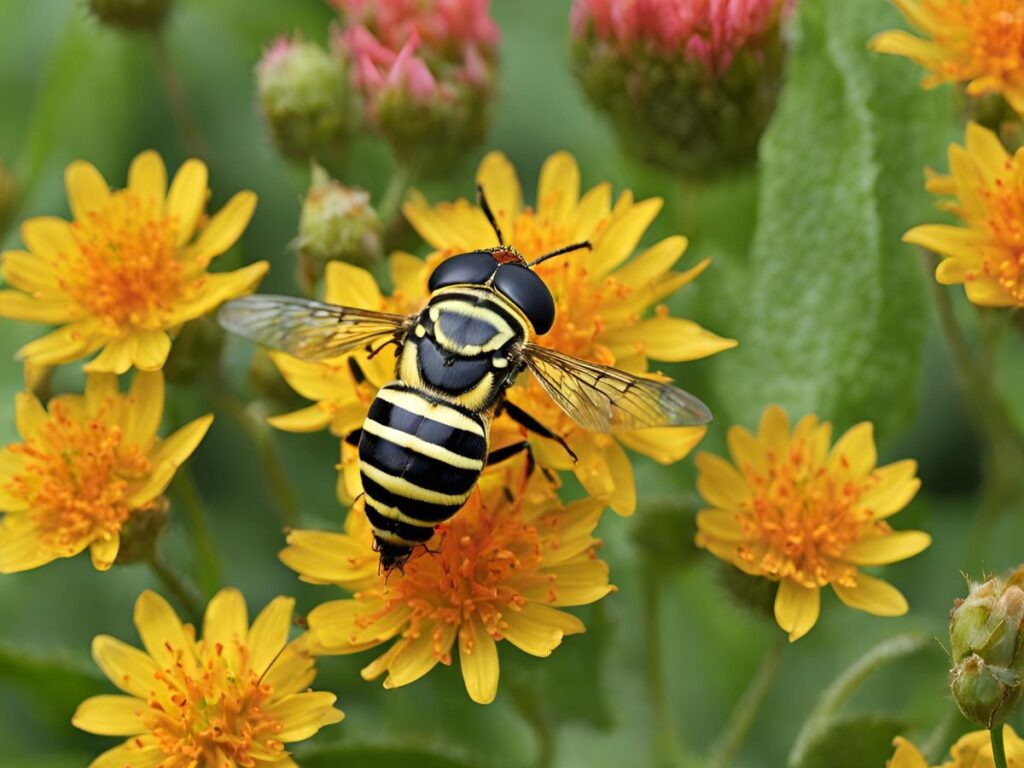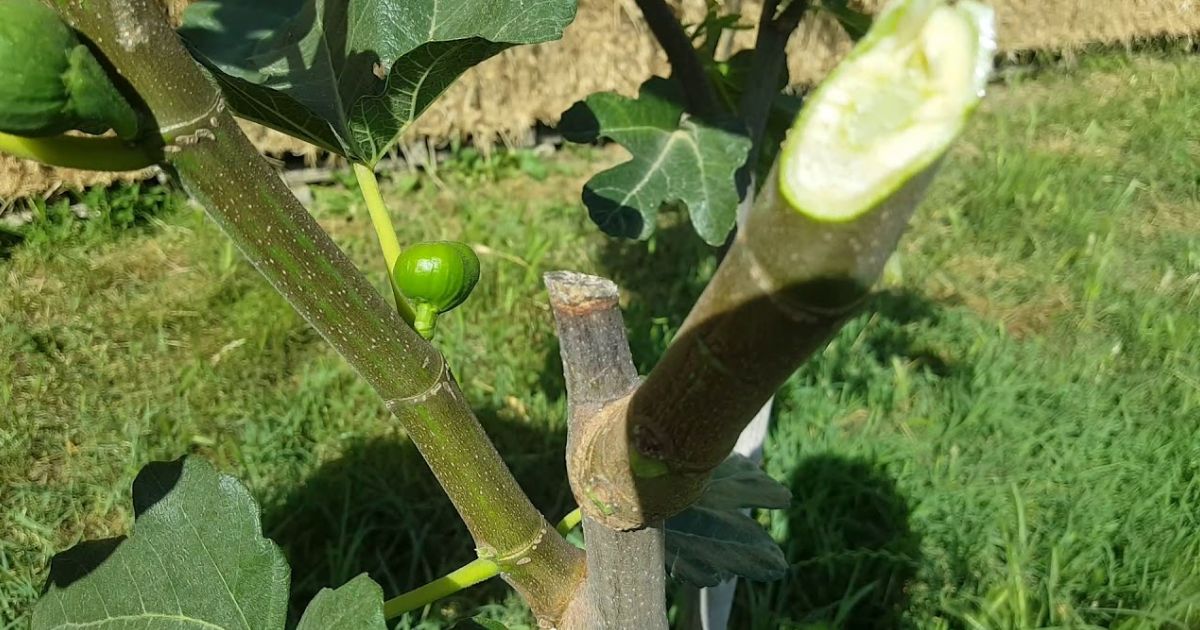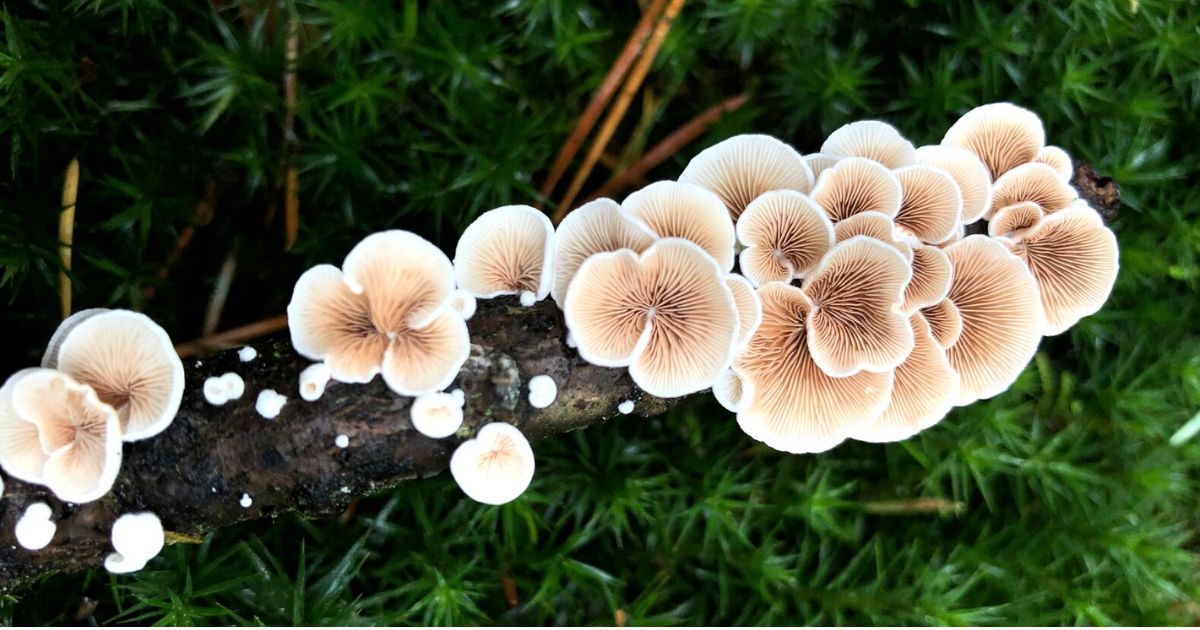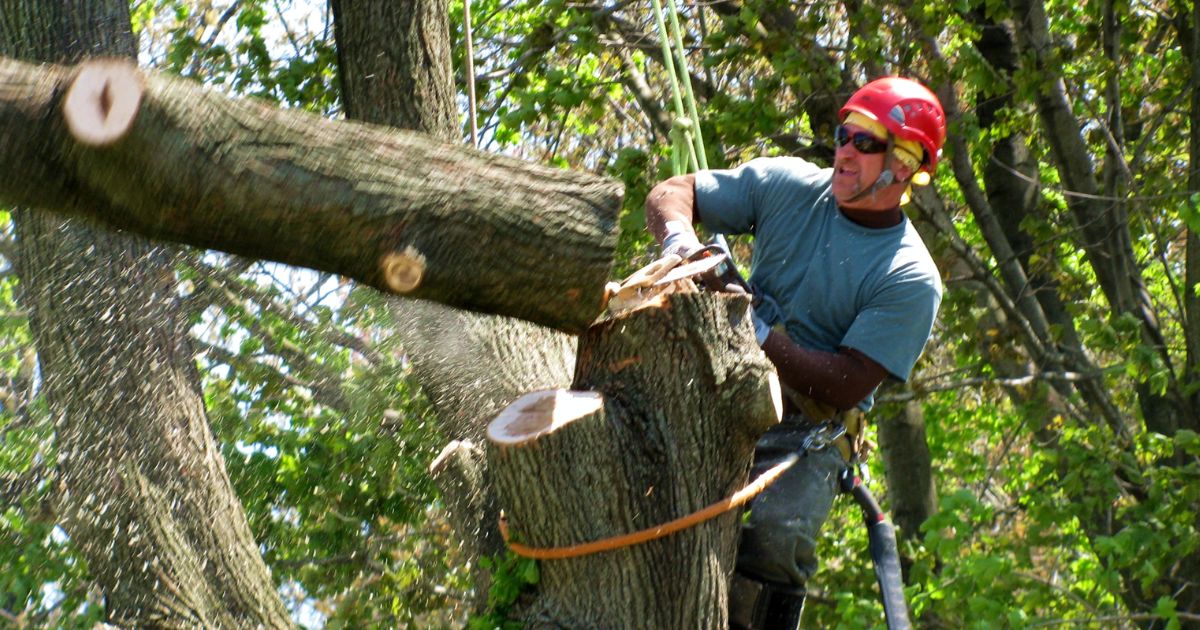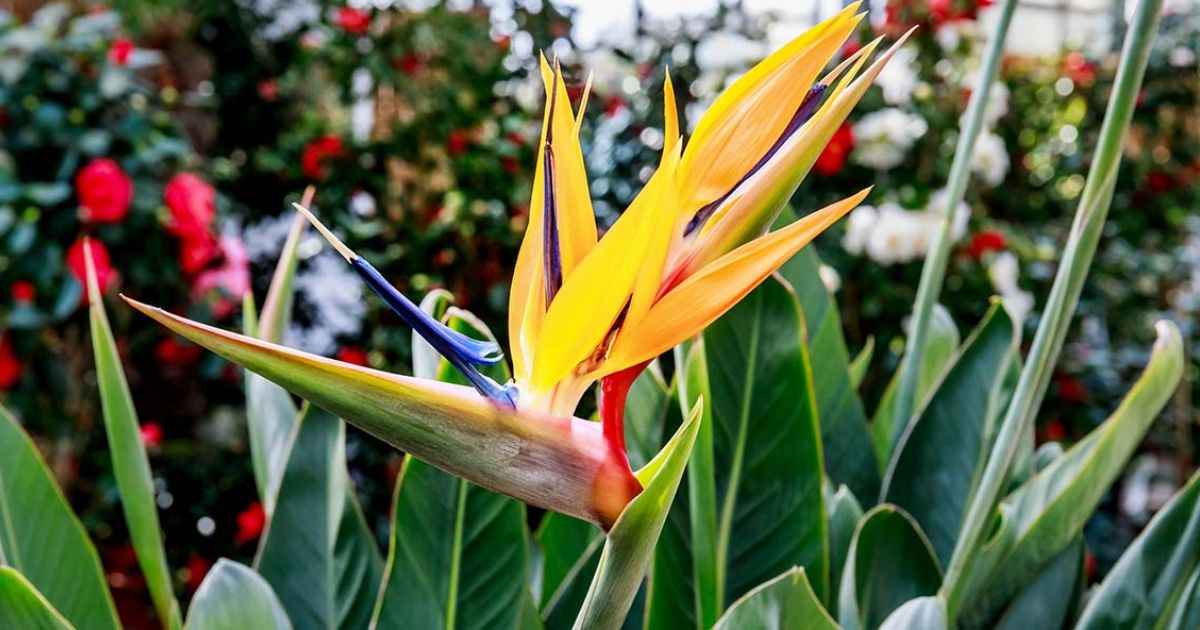If you’ve ever dealt with the frustrating sight of aphids infesting your garden, you know how damaging these tiny pests can be. From curling leaves to stunted growth, aphids can quickly turn a thriving garden into a struggling one. While many gardeners reach for chemical pesticides to combat these pests, there’s a much more natural and eco-friendly solution: hoverflies.
Why Hoverflies Are Your Secret Weapon Against Aphids in the Garden lies in their ability to provide a powerful form of natural pest control. Hoverflies, often mistaken for bees due to their striking similarities, are beneficial pollinators and effective predators of aphids. Their larvae devour aphids in large numbers, reducing their population and reducing the harm they inflict to your plants. Best of all, hoverflies are harmless to humans, pets, and beneficial insects, making them a safe and sustainable alternative to chemicals in your garden.
What Are Hoverflies?
Hoverflies, also known as syrphid flies, are a group of insects in the family Syrphidae. Despite their name, hoverflies are not true flies in the conventional sense but belong to the order Diptera, which also includes mosquitoes and houseflies. These insects are found worldwide and are particularly abundant in gardens, where they play a crucial role in maintaining a balanced ecosystem.
Key Characteristics
One of the most interesting features of hoverflies is their ability to mimic bees and wasps, a trait known as Batesian mimicry. They have body shapes and coloration similar to bees, with many species having yellow and black stripes. However, hoverflies do not sting like bees, making them harmless to humans and pets. This mimicry helps them avoid predators that typically shy away from stinging insects.
Depending on the species, hoverflies are relatively small, typically 4mm to 15mm long. They are known for their impressive flying skills, particularly their ability to hover in place, hence their name. They can fly forwards, backward, and even hover motionless in mid-air, which helps them as they feed on nectar and pollen from flowers.
Benefits
Hoverflies are incredibly beneficial in gardens due to their dual role as pollinators and natural pest controllers. Adults primarily feed on nectar and pollen, assisting in pollination as they move from flower to flower. This makes them valuable contributors to the health of flowering plants and helps boost the productivity of many fruits and vegetables.
But their real value lies in their larvae, which are voracious predators of aphids. Hoverfly diet larvae are natural aphid controllers, consuming large quantities of aphids during their development. By keeping aphid populations in check, hoverflies help reduce the damage these pests cause to plants, making them an essential ally in organic and sustainable gardening practices.
In short, hoverflies offer a natural and effective solution for maintaining a healthy garden ecosystem, making them an excellent choice for gardeners seeking environmentally friendly pest control methods. preserving vegetables for winter
Aphids: The Garden Pest You Need to Know About
Aphids are small, sap-sucking insects in the family Aphididae. These tiny pests are a common problem for gardeners worldwide, feeding on various plants, from vegetables to ornamental flowers. Aphids are often found in large colonies clustered on the undersides of leaves, tender shoots, or flower buds.
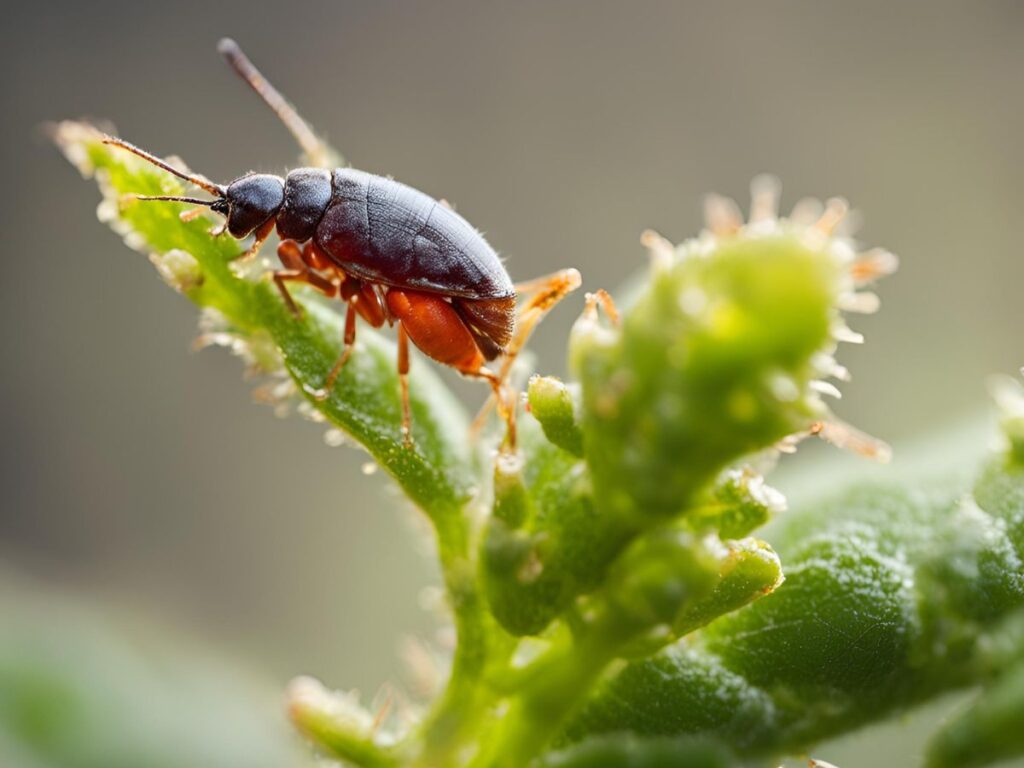
Aphid Identification
Aphids are typically soft-bodied, oval, or pear-shaped insects that range in size from 1mm to 4mm long. Depending on the species, they can be in various colors, including green, yellow, black, red, or even white. Many aphids have long, slender antennae and a pair of tubes (called cornicles) protruding from their rear end, which can help identify them. While they are often seen in groups, individual aphids can be challenging to spot due to their small size.
Aphids procreate quickly; females give birth to live offspring that can mature in as little as seven to ten days. This rapid reproduction allows aphid colonies to grow exponentially, causing infestations that can quickly spread throughout a garden. They are often introduced to plants through wind, nearby infected plants, or even animals carrying them.
Problems Aphids Cause
While aphids may seem harmless due to their small size, they can wreak havoc on plants when left unchecked. These bugs consume the sap from plants, piercing plant cells with their needle-like mouthparts and withdraw nutrients. This feeding damages plant tissues, leading to a variety of problems:
- Stunted Growth: Aphids extract vital nutrients from plants, denying them the resources necessary for normal development. This can lead to stunted plants that struggle to reach their full potential.
- Yellowing Leaves: As aphids feed on the sap, the affected plant’s leaves often turn yellow, a condition known as chlorosis. This is due to a lack of chlorophyll, which is essential for photosynthesis.
- Curling Leaves and Deformed Growth: Aphids can cause leaves to curl or become deformed, making plants less aesthetically pleasing and hindering their ability to photosynthesize effectively.
- Spreading Diseases: Aphids are known vectors of various plant viruses, such as the virus that causes cucumber mosaics and potato virus Y. As they feed, aphids can transmit these diseases, leading to further damage or even plant death.
In addition to the physical damage aphids cause, Additionally, they expel a sticky material known as honeydew, which might attract mold and lead to further plant complications.
Need for Natural Pest Control
While chemical pesticides may seem like a quick solution to aphid infestations, they have significant drawbacks. Many chemical pesticides harm aphids and kill beneficial insects, including pollinators like bees and natural predators like ladybugs and hoverflies. Over time, aphids can also develop resistance to certain chemicals, making the problem even more challenging to control.
Natural pest control methods, such as hoverflies, offer a more sustainable solution. By encouraging hoverflies in your garden, you can take advantage of their role as natural aphid predators, reducing the need for harmful chemicals. Hoverflies do not harm other beneficial insects, making them a safer and more eco-friendly option for managing aphid populations. Additionally, hoverflies help maintain the health of your plants by ensuring that aphids and other pests are kept in check without disrupting the balance of your garden ecosystem.
Why Hoverflies Are the Best Natural Solution for Aphids
When controlling aphids in your garden, hoverflies are one of the most effective and environmentally friendly solutions. These natural predators play a key role in controlling aphid populations, providing a sustainable alternative to chemical pesticides. Here’s why hoverflies should be your go-to method for aphid control.
Hoverfly Lifecycle: From Eggs to Aphid Predators
The lifecycle of a hoverfly is a key factor in why they’re so effective at controlling aphids. Hoverflies begin their life as eggs, which are laid near colonies of aphids. Once the eggs hatch, hoverfly larvae emerge and feed—specifically on aphids.
Hoverfly larvae eating aphids is a fascinating part of their natural behavior. The larvae are voracious eaters, consuming large quantities of aphids daily as they grow and develop. Hoverfly larvae can consume up to 400 aphids during their development, making them incredibly efficient at reducing aphid populations quickly. As they feed on aphids, the larvae gradually grow larger and eventually pupate, becoming adult hoverflies that will continue the cycle by laying eggs on new aphid colonies.
This life cycle allows hoverflies to target aphids at multiple stages, from when they hatch to when they reproduce, ensuring a steady reduction in aphid numbers. Unlike other predators, hoverflies focus specifically on aphids and can significantly lower their populations without damaging plants or other beneficial insects.
Effectiveness: Proven Success in Aphid Control
Studies and real-world observations have shown hoverflies’ remarkable effectiveness in controlling aphid infestations. Research has found that hoverfly larvae are highly efficient at locating and consuming aphid colonies in large numbers. In fact, in some cases, hoverfly larvae can reduce aphid populations by up to 90% in weeks.
For example, studies have documented how hoverflies have been used successfully in agricultural and garden settings to keep aphid numbers in check. In organic farming, where chemical pesticides are often limited, hoverflies provide a natural method for controlling aphids without harming the ecosystem. Observations in greenhouse settings have also shown that introducing hoverflies can lead to a significant reduction in aphid populations, often replacing the need for traditional chemical treatments. How to Choose the Right Fertilizer NPK Ratios for Your Garden
This success highlights the power of hoverflies as a natural solution for aphid control. How to get rid of syrphid flies They provide long-term, effective pest management without the environmental risks associated with chemicals.
Non-invasive Pest Control: Safe for Beneficial Insects and Plants
One of the most significant advantages of using hoverflies for aphid control is that they are completely non-invasive. Unlike chemical pesticides, which can harm many beneficial insects, hoverflies are very specific in their prey. They target aphids and other tiny pests, leaving pollinators like bees, ladybugs, and other beneficial insects unharmed.
How to get rid of hoverfly This makes hoverflies ideal for gardeners looking to maintain a healthy, balanced ecosystem. By encouraging hoverflies in your garden, you can reduce aphid populations without harming the insects that help pollinate your flowers and fruits. Additionally, hoverflies do not damage plants or disrupt the natural growth cycle of your garden. They help maintain a healthy balance by keeping aphids in check.
Hoverflies are an excellent natural solution for controlling aphids due to their life cycle, effectiveness, and non-invasive nature. Attracting hoverflies to your yard allows you to take pleasure in a thriving, healthy ecosystem where aphid problems are minimized and chemical pesticides are no longer necessary.
How Hoverflies Help Control Aphid Populations
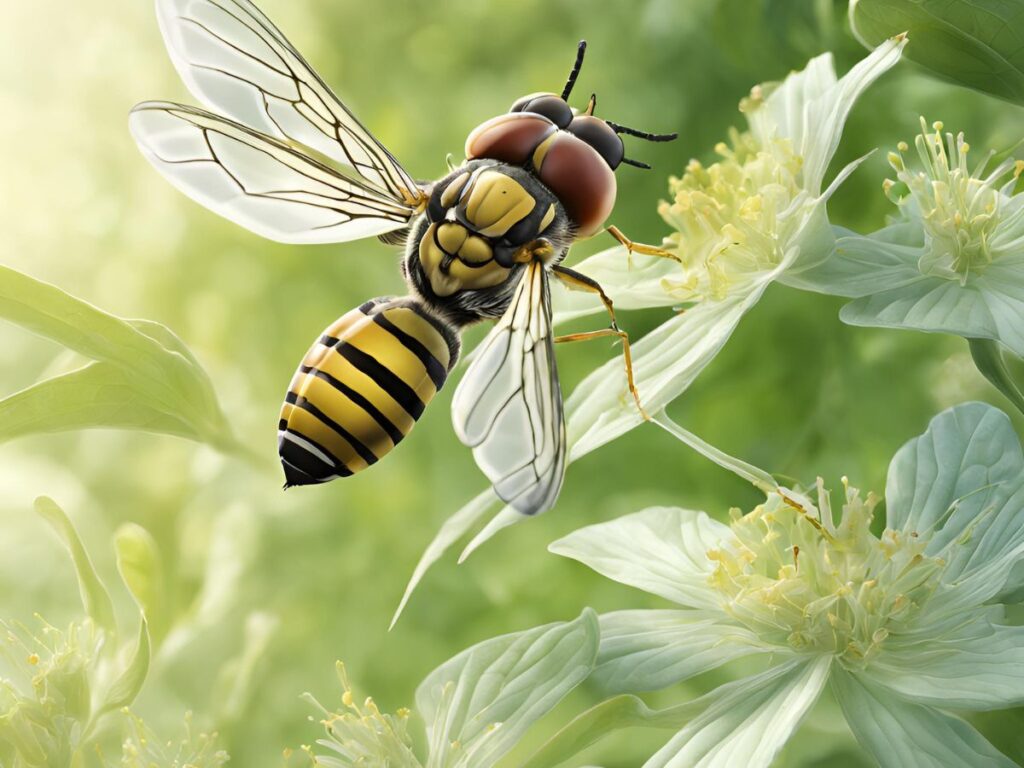
Hoverflies are nature’s most efficient and eco-friendly pest controllers, particularly when managing aphid populations. As gardeners and farmers alike know, aphids can quickly become a significant nuisance, damaging plants by sucking their sap, spreading disease, and stunting growth. However, hoverflies offer a sustainable and non-invasive solution to this problem thanks to their remarkable ability to target and consume aphids. how to ripen tomatoes indoors
Predation: Hoverfly Larvae vs. Aphids
Hoverflies help control aphid populations primarily through predation. They begin their life cycle as eggs, which they lay on plants near aphid colonies. Once the eggs hatch, hoverfly larvae emerge and begin hunting aphids. These larvae are voracious predators, specifically seeking out aphids as their primary food source.
Where do hoverflies live larvae are particularly effective at consuming aphids because they are equipped with specialized mouthparts that allow them to pierce the soft bodies of aphids and suck out their body fluids. They feed continuously, targeting large groups of aphids in one area, and can significantly reduce aphid populations quickly. As the larvae grow, their appetite intensifies, consuming even more aphids daily.
Feeding Habits: Hundreds of Aphids Consumed
Hoverfly larvae are not just light feeders—they can consume hundreds of aphids during development. Some studies have shown that a single hoverfly larva can eat up to 400 aphids before maturing into adulthood. This massive consumption helps dramatically reduce aphid numbers, preventing an infestation from getting out of control. As larvae continue feeding, they grow rapidly, eventually reaching the pupal stage and completing their transformation into adult hoverflies, ready to start the process all over again.
Hoverfly larvae’s effectiveness in controlling aphids is one of the main reasons they are regarded as such valuable allies in gardens and farms. Their high aphid consumption rates make them one of the most efficient natural predators of aphids.
Sustainable Control: Keeping Aphid Populations in Check
One of the most appealing aspects of hoverflies as pest controllers is that they offer a sustainable and eco-friendly solution to aphid problems. Unlike chemical pesticides, hoverflies do not harm the broader ecosystem. Their approach is highly targeted, focusing specifically on aphids and leaving other beneficial insects, such as bees and ladybugs, unharmed.
Moreover, hoverflies do not damage plants; they help protect them. Instead of indiscriminately eliminating pests, hoverflies work to maintain a balance in the ecosystem, preventing aphid populations from overwhelming your garden while allowing beneficial insects to thrive. This natural form of pest control helps keep your garden healthy overall by lowering reliance on harmful chemicals and promoting biodiversity.
Hoverflies provide a long-term, sustainable method of pest management by keeping aphid populations in check through predation. Their role as pollinators and natural aphid controllers means they contribute to the health of your garden in multiple ways. Whether in a small backyard garden or a larger agricultural setting, hoverflies are a valuable asset for anyone looking to reduce aphid populations while preserving the balance of the ecosystem.
How to Attract Hoverflies to Your Garden
Hoverflies are incredibly beneficial to your garden, but attracting them can help create a balanced and sustainable ecosystem. By offering the ideal setting and materials, you can encourage hoverflies to visit and reside in your garden. Here’s how to attract these natural aphid predators to your outdoor space.
Plant Choices: Choosing the Right Plants to Attract Hoverflies
One of the best ways to attract how do i get rid of hoverflies is by planting flowers and herbs they naturally draw to. Hoverflies rely on nectar and pollen for nourishment; The correct plants may make all the difference in your garden. There are several plants that are very good at drawing hoverflies include:
- Dill: Dill’s umbrella-shaped flowers provide a perfect landing spot for hoverflies and are rich in nectar, making them a favorite among these beneficial insects.
- Fennel: Fennel is another herb that attracts hoverflies, especially in bloom. Its tiny yellow flowers are easy for hoverflies to access, providing nectar and pollen.
- Marigolds: The bright, sunny flowers of marigolds are visually appealing and attract hoverflies and other beneficial insects. Their strong scent also helps to keep aphids at bay, making them a two-in-one solution.
- Yarrow: Yarrow’s flat clusters of tiny flowers are ideal for get rid of hoverflies, offering abundant nectar while supporting other beneficial insects.
- Coriander: Known for its quick-growing nature, coriander produces small, white flowers that are perfect for hoverflies when in bloom.
Including a variety of these plants in your landscape will help ensure a steady supply of nectar and pollen for hoverflies, encouraging them to visit and stick around.
Habitat: Creating an Ideal Environment for Hoverflies
Hoverflies are also drawn to gardens that offer an environment where they can thrive. To attract them, consider creating a habitat that provides everything they need for survival and reproduction.
- Shallow Water: Hoverflies require water sources for drinking and laying eggs. A tiny pond, a modest birdbath, or even a dish with shallow water will make your garden attractive for hoverflies. Add some small stones to create resting spots, and keep the water clean to prevent it from becoming stagnant.
- Diverse Flowers: In addition to specific plants, get rid of hoverflies appreciate a variety of flowers that bloom at different times of the year. This guarantees a steady flow of nectar and pollen throughout the growing season. Choose flowers with flat or shallow blooms, such as daisies or asters, to make it easier for hoverflies to feed.
- Vegetation for Shelter: Hoverflies seek shelter in tall grasses, shrubs, or plants with dense foliage. Creating open spaces and sheltered spots will provide hoverflies with the perfect environment to rest, lay eggs, and avoid predators.
Avoid Pesticides: Keep Hoverflies Safe
While hoverflies effectively control aphids, chemical pesticides can harm these beneficial insects. Pesticides, even those labeled “safe,” can be toxic to hoverflies and pollinators. Hoverflies are particularly sensitive to certain chemicals, and pesticide use can severely reduce their presence in your garden.
Minimizing or eliminating chemical pesticides is crucial to keeping hoverflies safe and encouraging them to remain in your garden. Instead, consider natural alternatives, such as insecticidal soap or neem oil, which are less detrimental to beneficial insects. If you must use pesticides, apply them in the evening or early morning when hoverflies are less active, and choose organic or eco-friendly products.
By reducing harmful chemicals and creating a welcoming environment with the right plants and habitat, you can attract hoverflies to your garden and allow them to thrive. This will help you naturally control aphid populations and support your garden’s healthy, diverse ecosystem.
Other Benefits of Hoverflies in the Garden
Do flies eat aphids are not only valuable for controlling aphids, but they offer a variety of additional advantages that support your garden’s general sustainability and well-being. Their presence can enhance biodiversity, improve pollination, and promote a balanced ecosystem. Here’s a closer look at some advantages of having hoverflies in your garden.
Pollination: A Key Contributor to Garden Health
Hoverflies play a significant role as pollinators, helping to fertilize a wide range of plants by transferring pollen as they feed on nectar. While bees often overshadow them, hoverflies are incredibly effective at pollination, especially in gardens where other pollinators might be less abundant.
Hoverflies are attracted to a wide variety of flowers, and their ability to hover in place while feeding makes them ideal pollinators for plants with small or delicate flowers. Their pollination services help increase the yield of fruits, vegetables, and flowers, leading to healthier and more productive plants. This is particularly beneficial in gardens where you rely on the successful growth of crops or flowering plants. By promoting better pollination, do ladybugs eat fungus gnats help your garden flourish and support the development of plants that might otherwise struggle without sufficient pollination.
Balanced Ecosystem: Maintaining Harmony in Your Garden
Hoverflies contribute to a balanced and healthy garden ecosystem in many ways. Beyond their role in aphid control, hoverflies also help keep populations of other garden pests in check. As larvae, they feed on aphids and small soft-bodied insects like mealybugs and scale insects, preventing these pests from overpopulating and damaging plants.
By controlling aphid and pest numbers, hoverflies help create a stable environment where plants can grow without being overwhelmed by harmful insects. This contributes to a healthier ecosystem where beneficial insects such as ladybugs, lacewings, and predatory beetles can thrive. Additionally, hoverflies serve as prey for other wildlife, further contributing to the food web.
Hoverflies do not harm other beneficial insects in the garden, such as bees, butterflies, or ladybugs, making sure they don’t upset the delicate equilibrium of pollinators and predators. Their presence helps create a harmonious relationship between various species in your garden, encouraging biodiversity and reducing the need for harmful chemical interventions.
Conclusion:
Hoverflies are an invaluable asset for gardeners looking to manage aphid populations naturally and sustainably. Their role as effective aphid predators, particularly during their larvae stage, can significantly reduce aphid numbers without harming other beneficial insects or plants. Not only do hoverflies control pests, but they also contribute to pollination, enhancing your garden’s overall health and productivity. By supporting a balanced ecosystem and keeping pest populations in check, hoverflies help create a thriving garden environment.
Incorporating how to get rid of hover flies into your garden is a simple and eco-friendly way to boost your garden’s resilience and reduce reliance on harmful chemical pesticides. By planting the right flowers, providing suitable habitats, and avoiding pesticides, you can attract these hardworking pollinators and pest controllers to your space. Start harnessing the power of hoverflies today and enjoy a healthier, more sustainable garden that thrives naturally.
FAQs
1. What are hoverflies?
Hoverflies, also known as syrphid flies, are small insects in the family Syrphidae. Due to their yellow and black coloring, hoverflies are frequently confused for bees, however they are not, hoverflies are harmless to humans. Hoverflies are important pollinators and natural pest controllers, especially for aphids.
2. How do hoverflies help control aphids?
Hoverfly larvae are voracious aphid eaters. They consume aphids in large numbers during their development stage. An individual hoverfly larva can consume as many as 400 aphids before maturing into adulthood. By targeting aphids, hoverflies help prevent these pests from damaging your plants.
3. What plants attract hoverflies?
Hoverflies are attracted to flowers that provide nectar and pollen. Their favorites include dill, fennel, marigolds, yarrow, and coriander. These species can be planted in your backyard to create an inviting environment for hoverflies to thrive.
4. Are hoverflies harmful to my plants or other beneficial insects?
No, hoverflies are harmless to plants and other beneficial insects. They target aphids and other tiny pests without causing harm to your plants. Hoverflies also do not damage other pollinators like bees or butterflies, making them an excellent addition to a healthy garden ecosystem.

